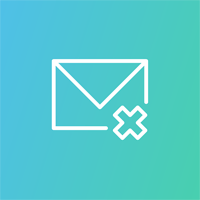The 5 Scariest Strategies That Email Marketers Are Still Using

:: By EJ McGowan, Campaigner ::
As autumn creeps on, so begins the season for ghosts and goblins, but for marketers gearing up for holiday campaigns, poor email strategies can be the scariest thought of all. When technology advances, so do email marketing best practices, yet some marketers are reluctant to innovate their strategies.
While getting an email campaign up and running in the first place can be rather simple - finding a provider, creating a list and sending messages - the frightening part is continuously putting in work to manage, refine and improve campaigns moving forward.
If marketers are slow to adopt new email strategies, the trick is on them; antiquated emails run the risk of degrading brand recognition and reducing email marketing return on investment (ROI). Read on to discover how outdated email marketing strategies could be scaring your contacts.
1. Ghastly Graphics
Emails that contain only images can be a red flag for the spam filter. While this strategy may have creative intentions, it can, in actuality, lower a campaign's deliverability rate. When creating emails, aim for a good balance of text and images as this will help ensure more emails reach their intended targets and also boost interaction rates.
2. Startling CTAs
When email marketing was in its infancy, the school of thought was that it was best to maximize the messaging that recipients see every time they open an email. Eventually, this strategy led to emails that included numerous calls-to-action (CTAs), which was overwhelming for readers. To prevent recipient distraction, each message should contain a clear, singular CTA (e.g., taking advantage of a sale, signing up for a newsletter, completing a survey or following the brand on social media).
3. Morbid Amounts of Messages
Similarly, early email marketers were under a spell that led them to believe the more emails, the better. Because email is the most effective form of marketing in terms of ROI, many professionals today are still sending emails at a frequency that is too high for their recipients' liking.
To avoid this pitfall, brands will want to use segmentation to send just the right message at the right time to the right audience (see sidebar).
Go-To Email Segmentation Options
Emails are better when they are delivered to the right people. Learn more at wsm.co/emailseg.
4. Petrifying Purchased Lists
As terrifying as it is to think that marketers are still buying lists of contacts who have never chosen to receive emails from their brands, this strategy is still in place at many companies. This approach is not only ineffective, but it also comes with the risk of getting banned by email service providers (ESPs). Large ESPs have sophisticated technology that can detect honeypots - decoy email addresses set up just to catch habitual spammers - which are often included in purchased lists. This sticky situation should be avoided by utilizing lists comprised only of contacts who originally opted in to receive emails from the brand.
5. Other Worldly Open-Rate Obsessions
Since opens are the first interaction between brands and contacts, many marketers use open rates as their only indication of a campaign's success. While open rates are certainly helpful to monitor, other key performance indicators (KPIs) should not be ignored. When measuring email success, a superior indicator to monitor is click-through rate (CTR). This data will not only indicate how many people opened the email, but, more importantly, how many people were intrigued by the content on the inside.
Skip the Tricks
If you are currently implementing any of the strategies outlined above, abandon them immediately and adopt newer strategies that will help campaigns reap greater rewards.
EJ McGowan, general manager of Campaigner, has more than 25 years of experience in the software industry with expertise in building highly available, scalable SaaS-based solutions.










